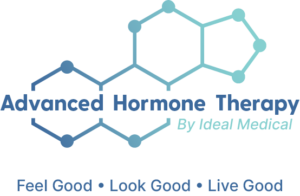If you find your face cringing when you think about the hormone pellet insertion procedure, please try to relax. We’re here to offer you step-by-step information that should alleviate any hesitancy you’re having toward getting the help you need. Receiving accurate information can be very comforting when anticipating a stress-inducing event. Let’s move forward by creating some comfort right now.
During the Initial Consultation most of our patients ask the question:
What is the hormone pellet implant procedure like?
First, rest assured, the process is relatively painless and it goes as follows:
Let’s Talk About Safety: As you are likely aware, there are potential risks involved with most, if not all, medical procedures. Some of the basic risks include a small amount of bleeding, possible infection, and minor scarring at the site of the incision.
Bleeding: A person may experience minor bleeding at the site of the small incision. The use of Steri-Strips and proper bandaging holds the wound closed and applies pressure to the area to stop minor bleeding.
Infection: The best way to minimize the risk of infection after the procedure is to keep the area clean. Some redness on and around the incision is normal during the healing process. A larger area of redness and heat in the affected areas would be a sign of infection.
Scarring: Most incision sites heal with time and leave no noticeable scar, but some people produce scars larger than others. The first incision is likely to be well-healed by the second appointment.
Preparing the Skin
Marking The Spot: Your practitioner identifies the location where the pellets will be inserted. For women, this will be within the area below the belt line on the back of the body. For men, it will be just above the belt line on the back of the body. Think of it as where most of us have more “real estate” to work with.
Cleaning The Area: To sterilize the area it is wiped with chlorhexidine.
Applying the Numbing Agent: To minimize the sting, buffered lidocaine with epinephrine is injected into the skin. The area is numbed in just a couple of minutes and is ready for the procedure.
Preparing the Dose: A tray is prepped with the patient’s individualized pellet dose, instruments to be used, and bandages.
Inserting the Hormone Pellets: A very small incision (approximately 5 mm for women; 10 mm for men) is made using a small scalpel. Insertion of the pellets is accomplished using an instrument called a blunt trocar. Unlike most pellet providers, we use a blunt trocar to minimize any trauma. The pellets are loaded into the trocar, which is then inserted into the incision and carefully pushed through the fatty tissue. Applying this technique as opposed to cutting tissue, prevents additional bleeding and associated risks. The pellets, each approximately the size of a Tic-Tac, are placed in an inline formation, and vary in number from three pellets for women, and eight to 12 for men. Once optimally positioned, the instrument is removed.
Bandaging the Incision: Your practitioner pulls the skin to close the incision and applies a Steri-Strip to secure the closure. A larger bandage dressing is applied over the Steri-Strip that will be removed the following day. The Steri-Strip is meant to stay on through showering and activities of daily living, and tends to fall off within a few days to a week.
That’s it. That’s all there is to this quick, simple, five-minute procedure. It’s easy and relatively painless.
When you return in a few months for your next dose, the pellets will be inserted in the alternate side of the body. If your first dose was in your right side, your second dose will be on your left, and so on. The frequency of your doses will be decided upon to ensure optimization of your hormone levels.
Gaining as much knowledge as possible about the care and treatment you receive is the key to ensuring optimal outcomes. At Ideal Medical’s Advanced Hormone Therapy clinic we’re here to provide information to ease your mind and set you on your individually designed path to improved health and well-being.
You may benefit from a full and individualized evaluation for Bioidentical Hormone Replacement Therapy (BHRT) at Advanced Hormone Therapy in Reno, NV. Please call us at 1-775-229-8683 to discuss your needs and to set up an appointment. You deserve to feel great. Let’s make that happen, together.
Told by: Kevin Brown, D.O.
Written by: Anne Kruse, M.S.
Photo credit: Spencer Selover on Pexels.com
